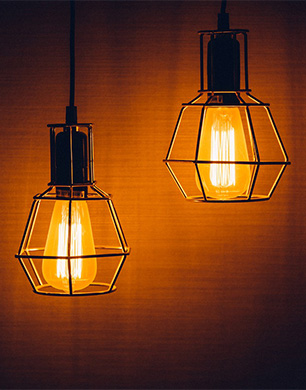
Photo Credit: xegxef, www.pixabay.com
When you get home at the end of a long day’s work, you want it to be somewhere you can relax and kick back in peace. But come the weekend, you might want a much brighter, more energetic atmosphere. While music can play a big part in this, if you like having background music on, a far more direct and effective way to set the mood in your home is through your lighting.
If every room can only be clearly illuminated or totally dark it can feel hard to properly relax in your own home. But by adding a few simple items to your house you can create a wide array of lighting effects to fit any mood. Read on for our guide to the different lighting options you should consider, which can make your home feel like a place that’s right for you, however you’re feeling.
Look into dimmer switches
If you are moving into a new home or have a little time to spare on reworking the electrics it can be worth trying out a single light with a dimmer switch. While these can seem quite old-fashioned now, having first been patented by the appropriately named Joel Spira in 1961, they are still useful to this day. Having been a mainstay in residential buildings for almost sixty years, they are still an excellent choice for a living room or dining room. Having the choice of how bright you want a room means you always have the freedom to make your living room a little brighter on dark, overcast evenings.
Place lamps strategically
It can be annoying to sit down and realise a section of your house Is very poorly lit, or that you cannot comfortably read without straining your eyes in your favourite chair. A good flexible solution is to invest in a variety of table and floor lamps. Floor lamps are a great addition to most rooms, and can come in a great variety of styles.
Make sure you will always have enough light
Seasonal Affective Disorder comprises of symptoms of depression or anxiety being brought on by dark wintry weather and a lack of Vitamin D from the sun. Research has shown it can affect up to one in three people in the UK, and is 40% more likely to affect women. The effects are acute for about 8% of the population.
Besides a lack of Vitamin D, it is also theorised that lack of sunlight confuses the body’s Circadian rhythms. In other words, a huge number of the body’s internal systems are synced up to the sun, including your body clock which determines when you wake up. For some people, lower levels of light during winter can disrupt and confuse this body clock, leading to sleeplessness and many symptoms of Seasonal Affective Disorder.
One technical solution to concerns about Seasonal Affective Disorder, and losing rhythms, is to time lights within your house to come on and go off in sync with the time that sunlight is expected every day through winter. More practically, most technological devices including your laptop now have a night light mode. In this mode the screen stops emitting blue light, which can stimulate the brain and keep you awake, automatically when the sun is due to set at your location, or at a time you set.

